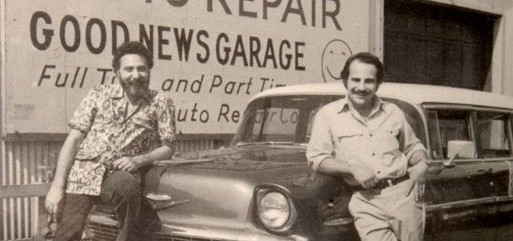
Sept. 17 Guided Tour of Cambridgeport Recap: “Ideas, Invention, and Imagination in Cambridge History”
Sat September 17, 2022
2 PM
Recap: “Ideas, Invention, and Imagination in Cambridge History” Guided Tour (9/17/22)
In their new book, Born in Cambridge: 400 Years of Ideas and Innovators, authors Karen Weintraub and Michael Kuchta argue that “[t]he story of Cambridge reflects the story of America….Major events and trends that affected the nation left fingerprints here, too.” But although the same outside forces have acted on Cambridge as on the rest of the country, the way the city and its residents have reacted to those forces has made for a unique and compelling story of invention, reinvention, and adaptation spanning four centuries. On Saturday, September 17, we hosted a guided tour given by Weintraub and Kuchta that explored some of the people, places, and events featured in their book and discussed how this small city became a thriving center for creativity in many sectors.
Cambridge is full of historical innovations, but we chose to focus the tour on the area in and around Cambridgeport, as we will be focusing on this neighborhood during our 2023 program year. We began the tour at 700 Main Street, the building complex where Charles Davenport invented the central aisle rail car, Daniel Stillson created the adjustable pipe wrench, Alexander Graham Bell placed the first long distance phone call, and Edwin Land developed the technology for Polaroid to create instant photographs. Continuing down Main Street, we visited the site of Tootsie Roll Industries and talked about the candy industry in Cambridge and the emergence of biotechnology and advances in gene editing that have occured in some of those former candy factories.
We continued on to the Margaret Fuller Neighborhood House, the childhood home of Sarah Margaret Fuller, a noted author, feminist, and Transcendentalist, and later reinvented as a settlement house with services aimed at helping immigrant women and families adjust to life in Cambridge. We also visited the Kennedy Biscuit Lofts, birthplace of the Fig Newton, and Dana Park, where the idea for the ride-sharing company Zipcar was born when parents Robin Chase and Antje Danielson talked while their young children played. While in Dana Park, we also discussed pioneering Black writer and editor Pauline Elizabeth Hopkins, who lived for many years on nearby Jay Street.
Our final tour stops were the Good News Garage on Hamilton Street—the car repair shop started by the Magliozzi brothers, Tom and Ray, who went on to national fame as the hosts of the National Public Radio show Car Talk—and the MIT Furniture Exchange on Brookline Street, where our guides highlighted the work of Alvan Clark & Sons, makers of some of the largest telescope lenses in the world in the late 19th and early 20th centuries.
Throughout the tour, our guides expounded on Cambridge’s “secret sauce”—that special combination of factors that has allowed a relatively small city to play such a prominent role in the development of new ideas. Weintraub and Kuchta cited Cambridge’s rich history as a center of higher learning, the density and diversity of its population, a commitment to the common good, a diversified economic base, and visionary leadership, as some of the key factors that have allowed Cambridge to continually reinvent itself, successfully adapt to change, and create contributions that have enriched the wider world.
We are most grateful to Karen Weintraub and Michael Kuchta for creating and leading this tour, and we look forward to more collaborations with them in the future!

